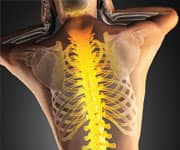Life Extension Magazine®
“Prehypertension” Associated With Greater Stroke Risk | |
The results of a meta-analysis published in Neurology®reveal that any blood pressure reading above what is currently considered normal is associated with an increased risk of stroke.* Dingli Xu, MD, of Southern Medical University in Guangzhou, China, and colleagues selected 19 cohort studies including a total of over 760,000 men and women for their analysis. They compared individuals who had normal blood pressure with those considered to have prehypertension, defined as a reading between 120/80 and 140/90 mmHg. The prehypertension group, who comprised up to 54% of the studies’ participants, was further divided into groups who had blood pressure higher and lower than 130/85 mmHg. The team found that subjects in the high range of prehypertension had a 95% greater risk of developing a stroke over follow-up periods ranging from four to 36 years in comparison with those who had normal blood pressure. Those in the low prehypertension group (between120/80 and 130/85) had a 44% greater risk. The take-home message from this meta-analysis is that any blood pressure reading higher than 120/80 presents a significant increased risk for stroke. Editor’s Note: Blood pressure is classified as normal if the systolic reading is 120 and the diastolic is 80 mmHg. However, many authorities believe that a blood pressure lower than 120/80 is optimal. —D. Dye |
|
| Reference | |
* Neurol . 2014 Mar 12. |
|
Meta-Analysis Finds Reduced Mortality Among Breast Cancer Patients With Sufficient Vitamin D Levels | |
Anticancer Research published the results of a meta-analysis conducted by a team from the Naval Health Research Center and the University of California, San Diego. The research reveals a protective effect for higher levels of vitamin D against the risk of dying from breast cancer.* Cedric F. Garland and associates selected five observational studies conducted between 2009 and 2013 that included a total of 4,443 women, among whom there were 471 cases of breast cancer. For women whose serum 25-hydroxyvitamin D levels were among the highest categories, a lower risk of dying from breast cancer was observed. In a pooled analysis of all participants, subjects whose vitamin D levels were classified as high at an average of 30 nanograms per milliliter experienced a 44% reduction in breast cancer mortality risk when compared to those whose levels were low at 17 nanograms per milliliter. Editor’s Note: Dr. Garland stated that, “There is no compelling reason to wait for further studies to incorporate vitamin D supplements into standard care regimens since a safe dose of vitamin D needed to achieve high serum levels above 30 nanograms per milliliter has already been established.” —D. Dye |
|
| Reference | |
* Anticancer Res. 2014 Mar;34(3):1163-6. |
|
Grape Seed Protects Against Damaging Effects Of Chemo While Boosting Its Effectiveness | |
Results published in the journal PLoS One by researchers at the University of Adelaide in Australia found a protective benefit for grape seed extract against mucositis, one of the most damaging effects of chemotherapy.* The condition is characterized by inflammation and ulceration of the gastrointestinal tract that particularly affects the mouth and small intestine. Dr. Ker Yeaw Cheah and colleagues divided 64 rats into groups that received one of three doses of grape seed extract or water for a period of eight days. During this time, all animals were injected with either the chemotherapy drug 5-fluorouracil or saline. On the day after treatment ended, the animals were examined for the presence of intestinal damage and inflammation. In comparison with rats that received 5-fluorouracil alone, those that received grape seed had less intestinal damage and up to 55% less inflammation. Editor’s Note: When grape seed was administered with 5-fluorouracil to cultured human colon cancer cells, the drug’s ability to inhibit cancer growth was boosted by 26% in comparison to drug treatment alone. —D. Dye |
|
| Reference | |
* PLoS One. 2014 Jan 21;9(1):e85184. |
|
Increased Vitamin K Intake Associated With Lower Risk Of Dying Over 4.8-Year Median | |
|
A study reported in the Journal of Nutrition links a higher intake of vitamin K with a lower risk of dying from any cause over a median follow-up of 4.8 years.* The study included 7,216 participants in the PREDIMED study, which sought to evaluate the protective effect of a Mediterranean diet against the risk of cardiovascular disease in older men and women. Annual dietary questionnaire responses completed by the participants were analyzed for the intake of vitamin K1 and vitamin K2. Over a 4.8-year median, there were 323 deaths, including 81 deaths from cardiovascular disease and 130 cancer deaths. Adjusted analysis uncovered a 36% lower risk of dying from any cause and a 46% lower risk of dying from cancer over follow-up among those whose vitamin K1 intake was among the top 25% of participants compared to the lowest 25%. Editor’s Note: For those who increased their intake of vitamin K1 over follow-up, the risk of death was 43% lower and for vitamin K2, the risk was 45% less than subjects whose intake was reduced or unchanged. Improvement of vitamin K1 and K2 intake was also associated with a 36 and 59% lower risk of dying from cancer during the follow-up period. —D. Dye | |
| Reference | |
* J Nutr. 2014 Mar 19. | |
Calcium, Vitamin D Supplementation Associated With Improved Lipid Levels | |
An article published in a recent issue of Menopause reported findings gleaned from the Women’s Health Initiative CaD trial of improved lipid levels among participants supplemented with calcium and vitamin D.* Peter F. Schnatz, DO, NCMP, and his colleagues compared serum lipid levels of over 600 participants who received a placebo or 1,000 milligrams of calcium plus 400 IU of vitamin D3 over the course of the trial. In addition to being twice as likely to have vitamin D levels of 30 nanograms per milliliter or more, women who received calcium and vitamin D had levels of low-density lipoprotein (LDL) that averaged 4 to 5 milligrams per deciliter lower than those who received a placebo. Subjects who received calcium plus vitamin D also had greater levels of beneficial high-density lipoprotein (HDL) cholesterol levels than the placebo group. Editor’s Note: Furthermore, among those whose vitamin D levels were 15 nanograms per milliliter or higher, calcium and vitamin D supplementation was associated with lower levels of triglycerides. —D. Dye | |
| Reference | |
* Menopause. 2014 Mar 3. | |
High-Fiber Diet Associated With Lower Risk Of Prostate Cancer | |
An article published in the online version of the Journal of Nutrition reveals the finding of French researchers of a reduction in the risk of prostate cancer over a 12.6 year median among men with a high intake of insoluble fiber.* The analysis included 3,313 men who enrolled in the Supplémentation en Vitamines et Minéraux Antioxydants (SU.VI.MAX) study in 1994. Dietary records completed on at least three occasions from 1994 to 2002 were analyzed for the quantity, source, and type of fiber consumed. The subjects were followed until 2007, during which 139 men developed a first primary prostate cancer. Among participants whose intake of fiber was among the top 25% of participants, there was a 53% lower risk of developing prostate cancer in comparison with those in the lowest 25%. Editor’s Note: When fiber was analyzed by type, insoluble fiber emerged as protective; when analyzed by source, fiber from legumes had a significant protective effect. —D. Dye | |
| Reference | |
* J Nutr. 2014 Feb 19. | |
Mechanism Proposed That Links Decreased Levels Of Vitamin D And Serotonin In Autism Patients | |
The FASEB Journal reported the finding of a mechanism for vitamin D in maintaining adequate brain hormones that are needed to prevent autism spectrum disorders. Levels of 25-hydroxyvitamin D3, the precursor to the hormonally active form of the vitamin known as calcitriol, have been found to be lower in autistic individuals compared with those who do not have the condition.* The hormone serotonin, which is reduced in autistic brains, promotes normal social behavior and facilitates accurate assessment of emotional social cues—abilities that are lacking in autism. It was discovered that calcitriol activates the transcription of tryptophan hydroxylase 2, a gene that converts the amino acid tryptophan to serotonin in the brain. Calcitriol simultaneously inhibits the gene responsible for another enzyme, tryptophan hydroxylase 1, resulting in a decrease in the production of serotonin in the gut and other locations where it can promote inflammation. Editor’s Note: The finding could explain the “serotonin anomaly” observed in autism, characterized by reduced brain serotonin and elevated blood levels of the hormone. —D. Dye | |
| Reference | |
* FASEB J. 2014 Feb 20. | |
Greater Lycopene Intake Associated With Lower Prostate Cancer Risk | |
Research reported in the Journal of the National Cancer Institute adds more evidence to a protective effect for lycopene, a carotenoid occurring in tomatoes and other red-pigmented plant foods against the risk of developing prostate cancer.* For the current study, Harvard researchers evaluated data from 49,898 male health professionals. Dietary questionnaires completed at different time points were analyzed for lycopene intake. Prostate cancer cases and deaths from the disease were determined for the period from 1986 to 2010. Among men whose lycopene intake was among the top one-fifth of participants, there was a 28% lower risk of prostate cancer in comparison with those whose intake was among the lowest fifth. When the risk of lethal prostate cancer was examined, those in the highest intake group experienced a 44% lower risk. In an analysis of early versus recent intake, early intake proved to be protective. Editor’s Note: Having a high intake of lycopene was additionally associated with cancer biomarkers that were indicative of a reduced potential for angiogenesis (the formation of new blood vessels by a tumor that facilitates its spread). —D. Dye | |
| Reference | |
* J Natl Cancer Inst. 2014 Feb 1;106(2):dj430. | |
Omega-3 Fatty Acids Improve Myocardial Function, Oxidative Stress In Rett Syndrome | |
An article that appeared in Mediators of Inflammation reports a benefit for supplementation with omega-3 fatty acids in Rett syndrome, a neurodevelopmental disorder that is associated with a 300-fold increased risk of sudden cardiac death in comparison with that of the general population.* The study included 66 Rett syndrome patients. Half of the participants received supplements containing the omega-3 fatty acids EPA and DHA for one year, while the remainder received no supplementation. Echocardiography evaluated myocardial function before and after the treatment period, and blood samples collected at the beginning of the study and at six and 12 months were analyzed for plasma free isoprostanes (markers of oxidative stress) and other factors. Omega-3-supplemented subjects experienced a reduction in oxidative stress markers, whereas the control group had no significant changes. Myocardial dysfunction and clinical severity also improved among those who received omega-3. Editor’s Note: The researchers additionally observed significant improvements in attention, breathing abnormalities, muscle tone, movement, autonomic dysfunction, and growth in supplemented subjects. —D. Dye | |
| Reference | |
* Mediators Inflamm . 2014 Jan 12. |
|
DHA Improves Children’s Sleep | |
The results of a study described in an article published in the Journal of Sleep Research reveal an association between higher levels of the omega-3 polyunsaturated fatty acid docosahexaenoic acid (DHA) and better sleep in children.* In a pilot study of 362 students aged seven to nine years, Professor Paul Montgomery of Oxford University and his colleagues found that supplementation with 600 milligrams DHA per day for 16 weeks improved sleep in a sampling of participants who were rated by their parents as sleeping poorly. Those who received DHA experienced seven fewer waking episodes and nearly an hour more sleep than those who received placebos. When blood fatty acid levels were evaluated, the researchers found an association with higher levels of DHA and less bedtime resistance, parasomnias, and total sleep disturbances. Having a higher ratio of DHA to arachidonic acid was also associated with better sleep. Editor’s Note: “This randomized controlled trial does suggest that children’s sleep can be improved by DHA supplements and indicates yet another benefit of higher levels of omega-3 in the diet,” co-author Dr. Alex Richardson concluded. —D. Dye | |
| Reference | |
|
* J Sleep Res. 2014 Mar 8. | |
Deficient Levels Of Vitamin D Associated With Compromised Immune Function | |
An article appearing in the Journal of Clinical Endocrinology & Metabolism associates vitamin D deficiency with elevated markers of inflammation in older men and women, indicating immune dysfunction.* The study included 481 men and 476 women who were subjects in the Trinity Ulster Department of Agriculture aging cohort study, which investigated nutritional and other factors in the development of chronic diseases in adults 60 years of age and older. Blood samples were analyzed for serum 25-hydroxyvitamin D, the inflammatory markers serum C-reactive protein (CRP), tumor necrosis factor-alpha and interleukin-6 (IL-6), and the anti-inflammatory cytokine interleukin-10 (IL-10). The researchers observed a decrease in IL-6, CRP, the ratio of IL-6 to IL-10, and the ratio of CRP to IL-10 in association with rising levels of vitamin D. “Our data suggest vitamin D may be involved in maintaining the health of the immune system as well as the skeletal system,” Dr. Ward remarked. Editor’s Note: Dr. Ward added that, “Ensuring older individuals have optimal vitamin D levels may be a way to boost immune function in this population, but this needs to be confirmed through additional studies.” —D. Dye | |
| Reference | |
. 2014 Feb 25. |











